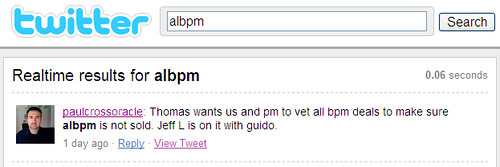Every once in a while, someone suggests that vendors pay me for coverage. The latest accusation actually used the term “pay-for-play”, which is a derogatory term for industry analysts who require that vendors be their paid clients before they receive any coverage by the analyst, and is often considered to be unethical. Vendors who work with me know that’s not true, but I just wanted to sum up how I work with vendors.
Unpaid Work
- I will accept a briefing from any vendor whose products that I find interesting. I might also write about an interesting piece of news, a webinar that I watched, or information about upcoming events. If I choose to write about any of this here (which I sometimes don’t, due to time constraints or lack of interest), the vendors do not have review/edit privileges before I post: they see my review the same time as all other readers. This last policy, by the way, has resulted in some vendors shutting me out of their analyst programs, since they want to control the message; needless to say, I don’t write about them much since all they give me is the same information as you could find on their websites.
- I will attend a vendor conference but must have my travel expenses reimbursed since I’m an independent and would have to pay these costs myself.
I know that a lot of analyst firms charge for merely attending briefings and conferences, and maybe I will start doing that some day, but I want the freedom to write (or not) whatever I want about what I see without any sort of oversight or censorship, since I think that’s important to my readers. If there is information presented that’s under embargo or NDA, I always honor that. Note that in both of these cases, I give up my time – which could have been spent on revenue-generating work – to attend events and briefings, so if you’re envious of all my “free” trips to exotic locations, remember that I don’t get paid while I’m there unless I’m doing paid work.
Paid Work
My website describes the types of paid work that I do for vendors, but to sum up:
- I consult on strategy, including product and go-to-market strategy. When I do this, you’ll probably never hear about it since anything I produce will be under NDA to my client.
- I give webinars and conference presentations, and write white papers. Although I choose my subject to be of interest to my client (the vendor) and their audience, what I write is my own opinion: the fact that a vendor pays me to write a white paper does not mean that I am endorsing their product, even though they appear as a sponsor of the paper. If appropriate, I will mention their product as an illustrative example. I upload my presentations and papers and link to them from my blog because people always request copies, and because these materials form part of my online portfolio to allow other prospective customers to understand what I can do for them. When doing a (paid) conference presentation, I may also be blogging from the conference, which is covered under the unpaid work section above.
Regardless of my relationship with a vendor, I am never compensated for product sales, nor for blogging about them, nor for giving a positive review about their product. I have a disclosure statement that summarizes these principles and lists current and recent vendor clients. It would be fair to say that vendors who take the time to cultivate a relationship with me and invite me to their conferences tend to get more coverage because I’m exposed to more information about them, but it’s not necessarily favorable coverage.
Since most of my work is for enterprise clients – primarily helping financial services and insurance organizations with BPM implementations – I follow strict ethical guidelines, including disclosing the names of my vendor clients to my enterprise clients at the start. Since many enterprise clients use my blog and white papers as a way to get to know my work, it’s important that I present unbiased information of value.
</rant>

